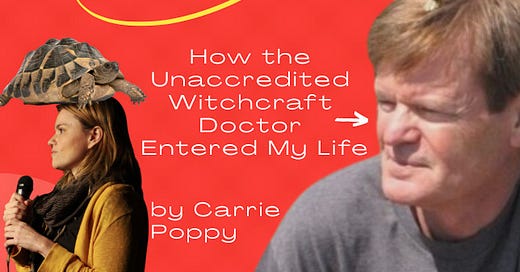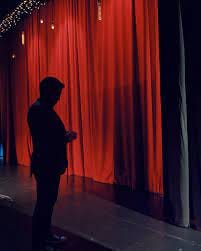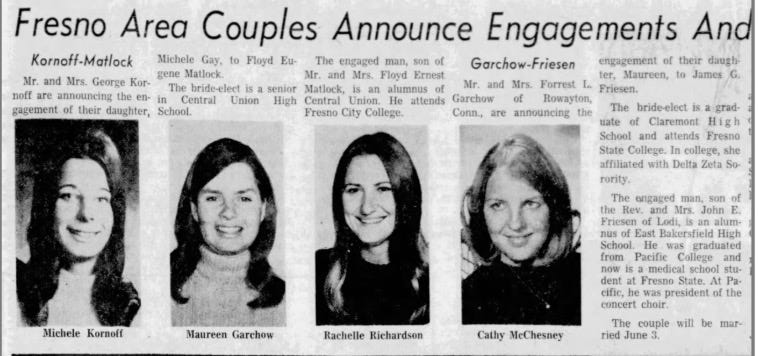In my last essay, I told you that Dr. James Friesen, an unlicensed trauma “therapist” I saw undercover, has been fined by the State of California, thanks to my complaint.
That’s great! Cause the guy is not a good trauma therapist!
He thinks just everything is forgotten trauma, especially my migraines.
It was December 7, 2021 when I recorded that.
COVID was high, no one was meeting in person, and teletherapy was the new norm.
I was about to spend the next several months tapping my knees, inducing hypnotic states, and recalling bizarre torture stories that (as far as I know) didn’t happen.
How does this all happen?
How does someone become a fake therapist?
August, 1947.
Jim Friesen is born to Anne Miriam Schultz and Reverend John E. Friesen, a pastor, in the Central Valley of California.
“I had been taught the Bible throughout my childhood. My mother would read to me for hours from a Bible story book,” Friesen recalls in his book, Uncovering the Mystery of MPD (1991,1997).
Jim’s parents had wed two years before his arrival, and Jim would quickly be expected to follow in his father’s footsteps, and become a pastor. His father attended Fuller seminary down south in Los Angeles County, and it was expected that Jim would too. But although Jim was a Christian, he was obsessed first with the human mind.
When Jim left home, he studied psychology at Fresno Pacific University, a private Christian school where he led the boy’s choir.
At Fresno Pacific, he would see the spirit world confirm itself.
He recalls the very day it started:
During my sophomore year in college, I walked over to a friend’s room in the dormitory one afternoon… The door was closed. That was not particularly unusual, but as I knocked on the door and was invited in, a strange feeling came over me. A few students sat around a small metal typing table. Their hands rested lightly on its top, and their little fingers overlapped to form an unbroken ring of human contact.
‘What’s going on?’ I asked.
The reply: ‘A seance.’
I did not know how seances were carried out, so I just went over to the other side of the room and quietly watched as the students continued. In subdued voices they were asking questions of a spirit. The table would tip to one side for yes, to the other for no… without any direct human help…
One doubting student was on his knees, trying to figure out just how those charlatans were tricking everyone into believing that a spirit really was moving to the table! He found no evidence. This was no human trick. The table was being moved by an unseen force, and there was every reason to believe it was indeed a spirit. The student finally quit trying to figure out the ‘illusion,’ and watched with the rest of us, but he declared that there probably were magnets in the ceiling (some twelve feet overhead) which were responsible for the illusion.
I could not help but believe what I was seeing…
UNCOVERING THE MYSTERY OF MPD, 1991/1997
When I ran into this anecdote in Friesen’s book, and realized this was the first encounter he had with “the supernatural,” my gut fell into my socks. Vicarious embarrassment filled my body.
Levitating a desk or table is a common magic trick (serious spoiler video at that link). To do this trick, at least one person in the room must be in on it and either fooling or corralling the others, as it involves mechanical manipulation and visual misdirection.
But since I am a very bad magician (just a really big fan), I emailed Helder Guimaraes, the best magician I know. Helder has obsessed rather singularly about magic since he was a child, and (like me) appreciates the work of magicians who fight con artists.
FROM HELDER’S FACEBOOK PAGE: “That moment before you go on stage. When you feel you have wings, but you’re never certain if you can fly.”
I showed Helder the four pages that comprise this entire story.
He responded:
This is something classic, and trickery is involved. First, he claims that hands gently touch the table, meaning that one of the people at the table was operating it. Like pendulum work, the person moving the table might not know they are doing it. They might be conditioned by the environment and act subconsciously. With the right table, it's not difficult to tip it (especially if the table is a bit off balance or two of the legs have more friction to the floor than the other ones.) Only one person at the first table knows what they are doing. The remaining guests are conditioned to follow along, and they genuinely move the table without knowing. All these are very possible and doable, although the specifics of precisely what happened are hard to know from reports alone.
So Helder and I (a person who watches a lot of magic) agree: we are talking about a magic trick. The doubter checking the table for trickery may very well have been the magician himself.
A prankster at the Christian college set off James Friesen’s lifelong certainty that the occult is real, driving him inevitably toward his own personal cliff.
Whoever that prankster was, they had never fessed up. The occult was now conclusively real, and Jim was committed. In 1970, Friesen graduated with a bachelor's degree in psychology.
In ‘72, Jim’s girlfriend, Maureen Garchow, became his fiance, just as Jim began applying for medical school. The medical school idea wouldn’t stick, but Maureen would.
FRESNO BEE 1972
At some point, Jim had wanted to go into medicine, perhaps become a psychiatrist. But the sciences baffled him. For one thing, he doesn’t believe in evolution, or even seem aware that most educated people do:
“The notion that something evolved out of nothing and turned into life, has not gathered much momentum. It looks like people have little confidence in science as a guide to finding meaning in life.”
(Mystery, 1991/1997)
«For the record, even in America where science education is not great, most of us believe in evolution. (Pew 2013)»
Ditching the pre-med label, Jim applied to nearby California State University Fresno, and got in. Like his dad, Friesen would continue serving the Lord, but he would do it through Christian counseling. He earned his master's in psychology in 1974, then moved right to the belly of the beast, to L.A. County, to go to Fuller Theological Seminary. Just like his dad.
Fuller had just added its psychology department in 1965, under the advisement of president David A. Hubbard, a mover and shaker who turned Fuller into a multidisciplinary and multidenominational institution.
Fuller is a hidden Los Angeles gem I have heard about since childhood (I grew up just over the hill). As a Presbyterian child, my youth pastor had gone to Fuller. His boss had gone to Fuller. Friends spoke about one day going to Fuller. For liberal Christians, it was a reputable place. Not too weird. Respectable.
The New York Times said Fuller is “an important center for mainstream -- that is, ecumenical, as distinct from fundamentalist -- evangelical thought.”
It was also the standard bearer for a new American religious development:
Before Fuller’s influence, the American Psychological Association would only accredit psychology departments attached to universities (not churches and religious institutions). That made sense, since psychology is supposed to be, on some level, a science, and science is supposed to be distinct from religion and well anyway I can’t believe I’m typing this.
But when Hubbard entered the scene, and turned Fuller into a well-funded powerhouse, the APA caved.
According to the New York Times, Fuller’s fledgling psychology department, which housed young Friesen, was “a model for seminaries elsewhere in the United States and abroad.” The first religious institution to legally bypass the mainstream therapeutic licensing system.
Jim Friesen, then, is a case study for exactly how well that went.
See you next time.
[After the paywall: a personal update, a community update, and a substack recommendation.]
Keep reading with a 7-day free trial
Subscribe to Carrie Poppy to keep reading this post and get 7 days of free access to the full post archives.






